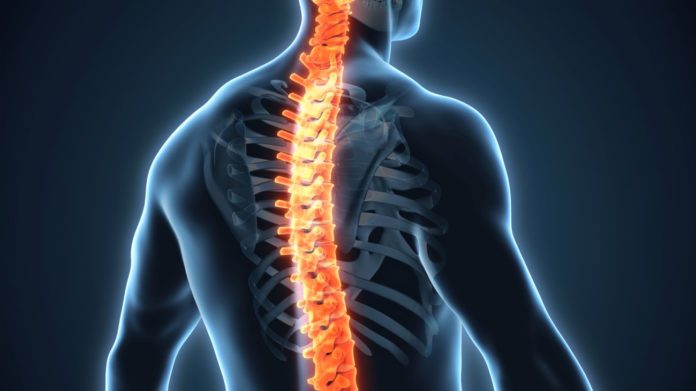Tests show hydrogel helps repair damaged spinal nerves that control breathing after spinal cord injury
A hydrogel that binds to the nerve stimulating agent BDNF (brain-derived neurotrophic factor), has shown promise for developing new treatment for spinal injuries.
The gel along with BDNF triggers release of a nerve-repair protein at the site of injury that enhances diaphragmatic respiratory function.
The research was published on June 11th in the The Journal for Neuroscience.
Spinal trauma is common in car accidents (road traffic accidents), sports injuries or injuries from fall from height. They often result in loss of control of breathing, thereby leading to patients’ dependence on artificial ventilation for the rest of their lives.
The proportion of DALYs (disability-adjusted life years ) due to injuries contributed to 11 – 13% of the total DALYs in 2016. Road injuries are the 10th leading cause of health loss in 2016, according to the first Indian state level disease burden study 2017. Road injuries caused 65% more DALYs in 2016 than they did in 1990 and major causes of death and disability was due to brain and spinal injuries.
Researchers at Jefferson (Philadelphia University + Thomas Jefferson University) tested a hydrogel that releases the nerve-protecting agent BDNF at the site of injury, restoring independent breathing in rat models.
The researchers saw a 60-70 percent improvement in breathing control as measured by diaphragm-muscle contraction in rats that received the BDNF gel after spinal cord injury.
“The hydrogel can deliver a neuron-stimulating agent that repairs a critical aspect of spinal cord damage, while avoiding systemic side effects of the agent,” said co-senior researcher Angelo Lepore, PhD, Associate Professor of Neuroscience in the Vickie and Jack Farber Institute for Neuroscience at Jefferson. “We looked specifically at the bundle of nerves that control breathing. Our preliminary work in animal models could lead to new treatments in the future for patients suffering from respiratory compromise, and may also apply to restoring other functions affected by the injury.”
“The gel has the property of being able to release a specific dose, over a controlled period of time, in a particular area, can be implanted in a safe manner, and is biocompatible so the body does not mount an immune response to it,” said co-first author Biswarup Ghosh, PhD, a research associate in Dr. Lepore’s laboratory.
BDNF is a known nerve-growth factor, and has been explored in clinical trials for ALS patients but its side effects such as muscle spasms and chronic pain have halted the trials. “Injecting the BDNF-infused gel only at the site of injury, we can bypass these side effects,” said Dr. Lepore.
Although many types of nerves will be affected by spinal cord injury, the researchers looked specifically at the bundle called the phrenic nerve that specifically controls the diaphragm — the muscle that primarily controls the rhythmic inflation of the lungs.
The researchers saw a 60-70 percent improvement in breathing control as measured by diaphragm-muscle contraction in rats that received the BDNF gel after spinal cord injury.
Dr. Lepore and colleagues showed that the BDNF gel helped regrow the nerves that connected the rhythm-control center of the brain with the spine and ultimately the diaphragm muscle.
“Although there are yet other types of damage that can occur during spinal cord injury, it’s encouraging to see this gel improve two extremely-important mechanisms by which breathing control is lost,” said Dr. Lepore.


